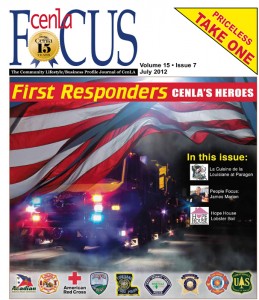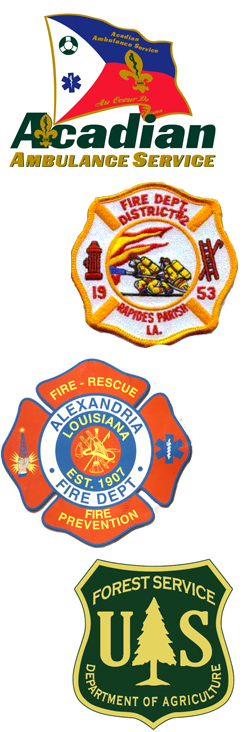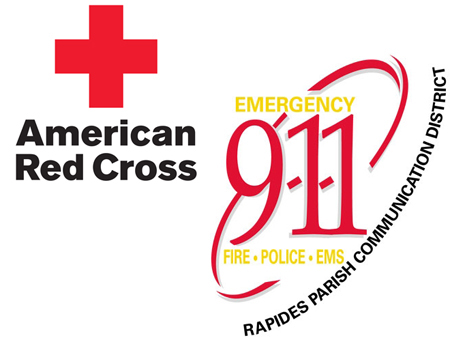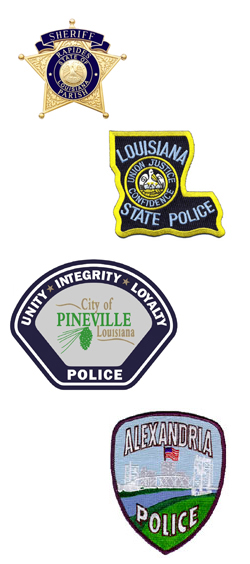
After all, these people – police officers, firefighters and emergency medical technicians and paramedics – dedicate their lives to saving others. And while they all hail from different walks of life, there seems to be some commonality among their ranks. Sometimes against impossible odds, these first responders—these heroes—with adrenaline coursing through their veins perform acts of valor.
Most do not claim they perform heroic acts because they say saving people’s lives or intervening in a crisis situation is all “just part of the job.” But to have that kind of attitude toward one’s “duty,” a person has to have character traits like honor and courage all bundled up with discipline and strength. Sirens blaring, these heroes are the first to arrive on the scene of an accident or hostile situation. Oozing with self-confidence, the first responders can bring calmness to chaos, as they access the situation.
Firefighters sometimes double as EMTs right after they have used the “jaws of life” to rescue someone from a tangled web of metal and glass, which was formerly a vehicle. To calm a crying child, police officers often will hand them a teddy bear to hug. Some perform life-sustaining techniques in the midst of a crisis. With such feats, one can almost see a Superman cap flapping from the backs of their uniforms. Cenla’s heroes perform exemplary acts in everyday situations. And yet the majority of this breed of superheroes does not believe what they do is extraordinary, but simply a job they love to do.
On a national level, strong images of the heroism of first responders seared into most people’s memories on September 11, 2001, when the World Trade Towers in New York City collapsed. Firefighters, first on the scene, rushed into the fiery flames. Police and medical personnel joined in on the rescue efforts. Hundreds of first responders lost their lives that day just “doing their jobs.”
In Central Louisiana, our firefighters, police, sheriff deputies and emergency medical personnel are heroes. They all work in concert together during a crisis. Newly elected Rapides Parish Sheriff William Earl Hilton stresses the first person to respond to a given situation is the most important.
“They alone can make the difference between life and death. Our deputies are professionally trained to handle any rapidly changing situation from an automobile accident to an active shooter. As law enforcement first responders, when it comes to protecting and serving, the ‘protection’ usually comes the easiest. All law enforcement personnel, including the Rapides Parish Sheriff Department deputies, have taken an oath to enforce all the laws of the land. They will go as far as putting their lives on the line to protect a total stranger, standing between good and evil,” Sheriff Hilton says.
As communities adopt new laws, it’s only a matter of interpreting them, then enforcing them, Hilton says. When it comes to the call for ‘service’, the law enforcement first responder has to be ready for anything. They may be assisting traveling motorists in the changing of a flat tire on his vehicle, to responding to someone’s family member off their medication and attempting to harm himself or others. Then, without warning, while trying to help, he may find himself fighting for his life because the medication turned out to be illegal drugs that the family forgot to mention in the initial call for help,” Hilton adds.
Whether responding to an overturned tanker truck which may turn out to be leaking, leading to the evacuation of a community, to a terrorist event involving a whole city, no matter what the call, the sheriff’s department personnel have to be ready, he notes. “Whatever the call, the first thing that happens is establishment of command, then sizing up the scene by doing a hazard/risk assessment then communicating the severity of the situation to others responding. Next is establishing perimeters and securing the scene to prevent it from becoming worse. All this is done within seconds of the first responder arriving on scene. The scene then determines what is done next. From evacuation to sheltering in place, decisions must be made in seconds to protect life and property. All this [must be] done while trying not to become a casualty yourself, in addition to protecting the scene to preserve any evidence,” says Hilton.
Anybody can find themselves being a first responder, according to Hilton. “You may be a witness at the scene of an automobile accident or to a natural disaster like a tornado passing through your community. Before you find yourself in this situation, you should obtain the skills to deal with possibly dangerous circumstances. The Rapides Parish Sheriff’s Office offers training of this type like the Citizens Emergency Response Team and Neighborhood Watch Groups. Professional first responders are trained to handle these situations and others. When the call comes, our deputies are trained and ready,” stresses Hilton.
Louisiana State Police Troop E, headquartered in Alexandria, currently serves 10 parishes: Winn, Sabine, Natchitoches, Vernon, Rapides, Avoyelles, Grant, LaSalle, Catahoula and Concordia. Geographically, Troop E is the largest troop, spanning from Texas to Mississippi. Troopers from Troop E are responsible for patrolling more than 9,000 highway miles on a daily basis.
As diverse as is the landscape, so are the citizens that the troopers protect and the troopers themselves. The troopers from Troop E come from a wide background of educational fields of study, prior military experience, and prior law enforcement experience. The men and women of Troop E have always prided themselves on family values, community involvement, and partnerships with other law enforcement agencies.
Troop E was first located at the intersection ofLee StreetatMasonic DriveinAlexandria. By 1968, Troop E Headquarters was relocated toNorth MacArthur Drive, near the old North Traffic Circle. This location served as Troop E Headquarters until 2000 and was nicknamed “FortWagner” after the current Troop Commander, at that time, Charles E. Wagner. In 2000, Troop E was relocated to the present location onOdom StreetinAlexandria.
State troopers say their goal is to enhance public safety through proactive measures such as patrol activities, checkpoints, and safety presentations. In 2011, Troop E troopers contacted over 23,000 individuals and made over 200 safety presentations related to seatbelt safety, speed, alcohol, railroad safety, internet safety, book readings, stranger danger, bicycle safety, firearm safety, mock crashes, and personal safety issues.
This year, Troop E has developed a strategic plan that seeks to reduce crashes. At the request of Colonel Mike Edmonson, state police superintendent, each section of State Police was tasked with the job of creating a strategic plan for its section. In its plan, Troop E has set a goal to reduce overall crashes and increase the number of DWI arrests in Cenla. To do so, troopers will focus their enforcement efforts in the most prevalent crash locations in each parish. Working closely with DOTD and local law enforcement, troopers will continue to conduct random checkpoints and send DWI task forces out into our area. However, troopers realize that crash reduction cannot be done through enforcement alone. “We must become a part of the community not apart from it,” Colonel Mike Edmonson, state police superintendent, says. So Troop E has taken his vision and incorporated it through the form of education. Over the next two years, Troop E plans to increase its number of safety presentations conducted. These presentations will take place in schools, businesses, and civic organizations throughout the troop area.
In 2011, Troop E had one of the safest years in recent history. “In the last couple of years we’ve seen our overall numbers decrease,” says Captain Kenneth Moore, commander of Troop E. “It is nice to know our work is making a difference. Although our numbers have shown a decrease from last year, we must always strive to make our roads safer. We still have too many alcohol-related fatalities,” notes Moore.
In an effort to enhance their safety efforts, Captain Moore has increased the number of selective enforcement details and continues to conduct random DWI and safety checkpoints in the Troop E area. Troop E also hosts the Cenla Public Safety Expo each year. Joined with area law enforcement and first responders, agencies can highlight their emergency response equipment and capabilities. It also allows the public to interact with troopers and local law enforcement officers. It’s another way we can become a part of the community.
Each year, Troop E troopers visit area hospitals during Christmas. The program is labeled “Christmas with a Trooper”. Troopers identify children who would be spending the season in the hospital, gather donated toys and deliver them to the children. In addition, Troop E has been recognized by the National Highway Traffic Safety Administration as a child safety seat “Inspection Station”.Mooresays it is a proven fact that child car seats and booster seats save lives. These devices offer the best protection for children in the event of a crash. However, approximately 3 out of 4 child seats are not used correctly. To schedule an inspection of a child car seat, troopers are available seven days a week. Appointments can be made by calling (318) 769-9872.
The Pineville Police Department officers say they are committed to the service of the citizens of the city. With 60 sworn officers, 8 non-commissioned support personnel and 15 reserve officers, the department strives daily to protect its citizens and visitors. While utilizing traditional proactive policing, the Pineville Police Department also embraces that positive interaction with citizens, which helps to build community relationships. The department has recently begun a Citizen’s Police Academy that gives citizen participants a glimpse of the officers’ daily functions and routines. The department has also developed its own Night Out Against Crime program that allows citizens to see the services provided by community public safety and to get tips for property and personal protection. The department has a fully staffed Special Weapons and Tactics Team (SWAT) and a dedicated Crisis Negotiation Team that both train regularly, including joint training with other local agencies in case of catastrophic events. Recently, the department has acquired all-purpose vehicles that are being outfitted for use in critical incidents and catastrophic weather events. The vehicles will allow the police more access to citizens for rescue operations in time of flood or debris fields.
The Alexandria Police Department is committed to providing the most up-to-date resources using “data driven” patrol tactics based on information generated by a computerized crime mapping system. This strategy allows patrol officers to be geographically dispatched based on activity reported. Officers are therefore able to be proactive rather than reactive. Crimes of opportunity are seldom prevented utilizing standard patrol tactics; however, with the map trending concept of this system, crimes of this nature are more predictable. There has been a noticeable decline in these types of crimes since the implementation of this system.
When areas of increased activity are identified, resources are applied resulting in shorter response times, increasing overall safety of everyone involved. This technique has been confirmed using CCI and community policing techniques. In critical incident situations, the Alexandria Police Department now has the ability to deploy a newly acquired armored vehicle and robot. This deployment would normally take up to two hours if the equipment had to be ordered from another agency. With more officers on the street, more training offered by the Alexandria Regional Police Academy, and utilizing the techniques mentioned above, the Alexandria Police Department is dedicated to making this community a safer place for the citizens of Alexandria.

Even with such a vast expansion, Acadian’s success is still rooted in the strength of its local employees. For emergency needs, Acadian has state-of-the-art ambulance units with the most advanced life-saving technology. For those situations where access by a ground ambulance is hindered or when swifter emergency transport is necessary, Acadian’s Air Med has a fleet of medically-configured helicopter ambulances strategically stationed for departures throughoutLouisiana, including one stationed in Alexandria.
While Acadian is known for emergency services, the company also offers non-emergency transportation. Hospitals and other facilities utilize Acadian to transport their patients, by ground or air units, when more assistance is needed than other transportation services can provide. All of Acadian’s medics are rigorously trained, and to keep them abreast of the latest medical advances, Acadian has its own fully accredited NationalEMSAcademy, providing in-house, continuing education for its medics. Acadian’s dispatchers are nationally certified medical dispatchers, so while a person is waiting for an ambulance to arrive, the dispatcher can immediately begin giving life-saving instructions over the phone.
In the heart of Central Louisiana, there is a team of 63 dedicated individuals that make up Rapides Parish Fire District 2 led by Chief Randy McCain. The department consists of five stations: 5104 Ransbottom Drive, 6850 England Drive, 3722 Church Street, 6613 Bayou Rapides Road and 20 Kincaid Road. The department has just finished a recruit class graduating six new firefighters that will start working this month. In November, the department will be asking for a rededication of the current approved tax to change the wording so as to be able to respond to emergency medical calls. This will be an additional service provided by District 2 without raising the millage rate. This will be accomplished by strategic placing of Sprint trucks manned by emergency medical technicians that will respond instead of a fire fighting apparatus. Chief McCain is moving the department into the 21st Century with the placing of emergency generators and computers at all stations, purchasing of new Fire Apparatus and training on state of the art fire fighting techniques.
The Alexandria Fire Department’s mission is to “serve the citizens and visitors of the city, with the best care possible, in their time of need.” To that end, the department has a total of 127 personnel divided into seven divisions: fire suppression, fire prevention, communications, emergency medical services, training, administration and maintenance.
The Fire Suppression unit, the main firefighting branch, consists of six fire stations, eight fire apparatus and two district chief cars. Firefighters man the stations 24/7 by working 24 hour shifts at a time, shared between three separate crews. When firefighters are hired, they must complete a training academy and become a certified firefighter. In addition, they must become a certified emergency medical technician, anEMT. More than 80 percent of the calls firefighters respond to are for emergency medical assistance.
Throughout their careers, firefighters receive continuous training. They also receive specialized training such as: confined space rescue and high angle rescue. A select group of personnel is on the city’s dive team, which receive specialized training in water rescue.
Kisatchie National Forest is home to firefighters on the front lines of wild fires across the nation. The U.S. Forest Service has a massive group of wild land firefighters. More than 10,000 individuals from across the nation undergo intensive training and certifications to become professional wild land firefighters. Kisatchie National Forest, Louisiana’s only national forest, headquartered in Pineville, has about 50 employees who have been trained and go out each year to assist, in various ways, in fighting wildfires. Tony Rivers, assistant fire management officer, is one of those 50 who are dispatched each year. He has been involved in fighting wildfires for 24 years.
“We know that we have all gone through the same training and qualifications, even though we all come from different backgrounds, cultures, and geographic areas of the U.S. What ties us together is the knowledge that the people working side-by-side with you are qualified and share the same goals,” Rivers says. Kevin Raffo, lead field technician, on the Catahoula Ranger District, agrees, “You know that everyone you are working with has undergone extensive physical and mental training. And when it comes to firefighting, that training allows you to work with anybody to accomplish the goal.” Raffo has worked with the Forest Service for 25 years in Idaho, Montana, Mississippi and now Louisiana. Over his tenure, he has fought over 1,000 wildfires away from his district and over 1,500 on his district.
Wildfires are unpredictable and can change in an instant. “Safety is instilled in you from day one of training,” explains Rivers, “You see what you have to do and how to battle a particular fire, and of course the weather can change suddenly and change your plans. Then you have to re-evaluate how to fight the fire and ultimately everything goes back to safety and how to make sure that everyone fighting the fire comes home for the night.”
After working in the forest service for 24 years, Rivers says one of the best aspects of being a part of the firefighting team is the friendships that last a lifetime. Raffo agrees that the Forest Service fire-fighting community is close-knit, “The thrill of accomplishing the job by overcoming obstacles and tough situations is one of the best aspects of being a wild land firefighter.”

Those who have never been behind the mic don’t understand the complexity of what a calltaker/dispatcher does. The perception is many times based upon what is seen on television. There is a real difference between reality and Hollywood. It is estimated that there are over 6,000 911 public safety answering points (PSAPs) serving more than 3,000 counties and parishes throughout the U.S., answering more than 200 million 911 calls per year. In Rapides Parish, with a population of approximately 130,000, we average 215,000 calls per year.
The people behind the mic are special individuals. It doesn’t matter which specific agency they work for, the challenges are similar. The job is demanding, sometimes frustrating, exciting, rewarding, but ever changing. Whether a calltaker, a dispatcher, or—as in our case, both–they’re handling emergencies and non emergent calls while simultaneously processing requests for services from field units across multiple agencies.
In the event of a disaster or emergency, the American Red Cross of Central Louisiana mobilizes Red Cross volunteers and works with a network of partners to help residents with immediate needs such as sheltering, feeding and health services. Preparation begins long before such an event occurs. The Red Cross has sheltering and feeding agreements in place with area organizations. Rick Boykin, preparedness and emergency services manager, says the difference between a disaster and a response is a plan. “All year long, we organize, plan and practice how we will meet human needs caused by these situations,” Boykin stresses.
A roster of trained Red Cross disaster workers is ready to respond and provide specialized assistance in the event of a disaster or emergency. The Red Cross has supplies such as cots, blankets, food containers and cleanup items which are ready to be delivered to affected areas as soon as it is safe. Disasters often separate families. “Damaged communication infrastructures can make it difficult for people to let their loved ones know where they are and that they are okay,” says Mary McMinn, chapter executive at the American Red Cross of Central Louisiana. “To help offset this uncertainty, the Red Cross offers a web-based tool known as Safe and Well. Users can go to RedCross.org/SafeandWell to register their whereabouts and to search for family and friends.” It also allows users to update their social networks, such as Facebook and Twitter, through the site. While weather conditions cannot be controlled, the Red Cross volunteers suggest that families take measures to prepare for different types of scenarios. Families should discuss various hazards and plan and practice how they will respond, advises McMinn. She says households should create a basic emergency supply kit that could be quickly accessed when needed. Additional details on preparedness for emergencies, may be found at www.redcross.org.
Running into a blazing inferno or stepping into the unknown during a hostage situation with only your badge and a gun takes guts. And yet, most of Cenla’s hometown heroes do not want any “glory” attributed to their bravery. But the families whose lives they have touched cannot thank them enough.










